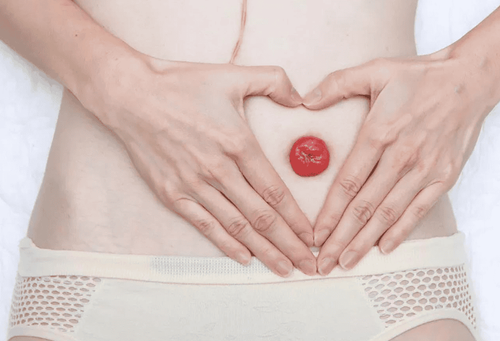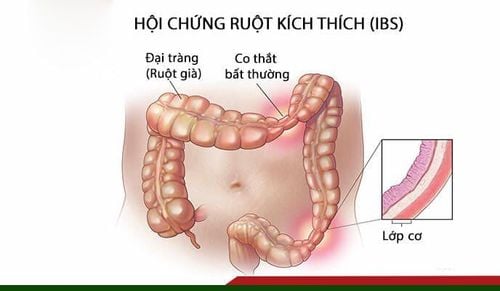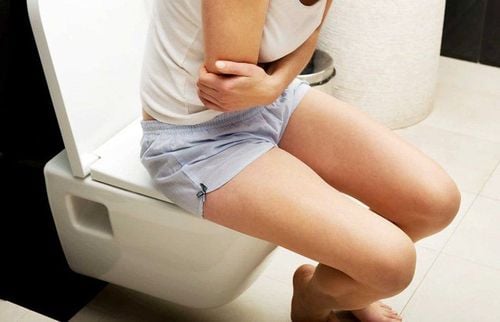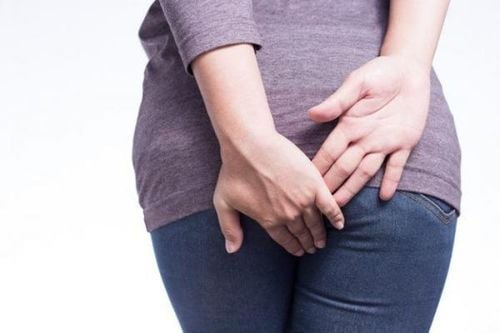This is an automatically translated article.
The article was professionally consulted with Specialist Doctor II Cao Thi Thanh - Pediatrician - Pediatrics - Neonatology - Vinmec Hai Phong International General Hospital.Anal fissure in children is a common disease that causes many discomforts in daily life. The disease is more common in older children, with the average age of onset being 6 months to 2 years. According to many statistics, more than 80% of children have anal fissures in the first year.
1. Classification of anal fissures in children
Anal fissures can be divided into 4 types depending on the characteristics of the fissures, including:Juvenile fissures : This is a group for newly formed shallow fissures, the anal surface is still soft, no calluses, so sometimes bleeding can be seen. Children with anal fissures with immature fissures have milder clinical manifestations than other groups, usually only burning pain, anal itching. Old crack: In this case, the crack is usually larger and deeper. The anal mucosa around the fissure begins to show signs of callus, when touched, it often feels rough, rarely bleeding. Children with anal fissures, if they have old fissures, are often easy to tear again when defecating, causing more pain for children. New fissures: Are anal fissures discovered by the patient himself through the uncomfortable symptoms he experienced. Cracks in this group are not easily recognized unless the child is taken to a medical facility that specializes in gastroenterology for a thorough examination. Old fissures: These are anal fissures that have existed for a while, so the accompanying calluses are easy to see, sometimes protruding into a small piece of flesh around the anal opening.
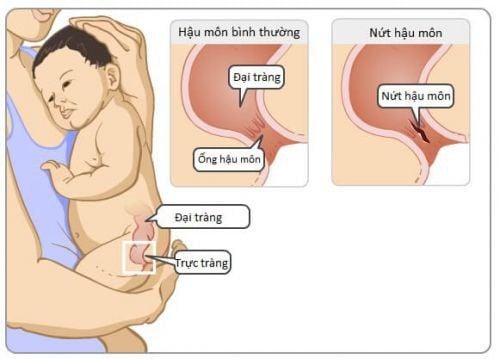
Nứt kẽ hậu môn gây nhiều đau đớn cho trẻ em
2. Causes of anal fissures in children
Anal fissures in children appear often as a result of constipation. Large, hard stools pass through the anal canal with difficulty, causing the anal mucosa to stretch many times, making anal fissures easy to appear.In young children, the sphincter activity is not stable, the child does not know how to defecate, plus the habit of defecating a lot can also be the cause of anal fissures. In addition, local inflammation in the anus or diseases such as colitis are also factors that cause anal fissures in children.
3. How to recognize anal fissures in children
Anal fissures in children most commonly manifest as pain and burning in the anal area, which increases during defecation and subsides shortly thereafter. Constipation is a risk factor for aggravating the condition. In addition, children with anal fissures also experience the following conditions:Bright red bleeding: Detected when bleeding right at the crack or accidentally discovered blood dots on toilet paper after defecation. Itching and discharge around the anus.
4. Methods of treating anal fissures in children
Anal fissures in children need to be treated properly and promptly to bring the most effective, minimize discomfort and pain for the child. There are two main methods of treatment: internal medicine and surgery.4.1 Medical treatment
Medical treatment can be applied to all disease groups. This method is a combination of the use of specialized drugs and the establishment of a reasonable diet for children.The groups of drugs commonly used in the treatment of anal fissures in children are:
Antibiotics: Prevention and treatment of inflammatory complications of the disease. Laxatives: Constipation is a factor that makes the disease worse, anal fissures recur many times, hindering the definitive treatment of the disease. Take laxatives and change your diet to soften stools and reduce stretching of the lining of the anal canal. Pain relievers: Used in cases where children have a lot of pain. Ointment: The composition often contains hydrocortisone, which reduces inflammation and accelerates wound healing. Parents or caregivers of children are absolutely not allowed to arbitrarily buy drugs at drugstores to treat children. Drug abuse or wrong treatment prolongs the disease, not only causing a lot of discomfort and pain for the child, but also creating conditions for many complications such as infection, anal abscess to appear more easily. Anal fissures in children need to be treated as soon as possible.
Change the child's diet and activities including:
Increase the child's water intake and add fiber in the diet. Drinking water can be filtered water or fruit juices. Proper anal care: Should soak, wash the child's anus with warm water 2 times a day, and after defecation.
4.2 Surgical treatment
There are many surgical methods for doctors and patients to choose from, but most of them are applied to cases of anal fissures with old fissures or unsuccessful treatment with medical methods. The doctor will surgically remove the callous organizations around the crack. Then, proceed to cover the fissure by pulling the anal mucosa in another place to fill it and stitch it in place.Besides, surgical treatment is also applied to reduce the spasm of the anal sphincter, supporting the recovery process of anal fissures in children. Various methods have been performed, including:
Anal dilation. Open the internal sphincter, possibly in addition to the external sphincter incision. Cut the internal sphincter with nitroglycerin ointment or botulinum toxin A injection. When anal fissures in children are not treated early and properly, many complications such as anal abscess, anal fistula may appear. At this time, surgical treatment of the disease must also solve these complications such as cutting the fistula and draining, cleaning the abscess.
5. Prevention of anal fissures in children

Nứt hậu môn ở trẻ em là bệnh lý có thể phòng ngừa được
Increase fiber in the diet: Teach children to eat more vegetables, nuts. Drink plenty of water: In addition to boiled and cooled water, parents should encourage children to drink more juice. Soak the anus with warm water: Soaking the anus with warm water after defecation helps children feel more comfortable, reducing the expression of anal itching. Clean the child after each bowel movement. Practice the habit of going to the toilet on time, instructing children how to push when going to the toilet. For cases of constipation in infants and young children, it can be resolved quickly with rectal enemas. However, when the child's constipation is prolonged, repeated many times, even affecting the physical development of the child, the child should be taken to a medical facility to examine and find the exact cause. and definitive treatment.






